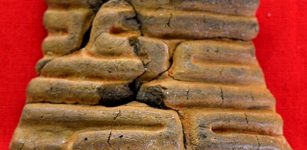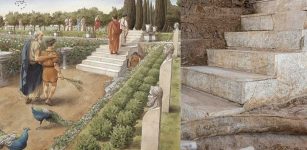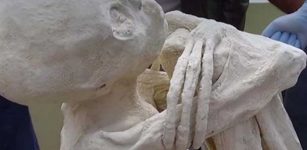Lake Biwako Reveals Some Of Its Secrets: Ancient Jar Discovered By Robot Baffles Japanese Researchers
AncientPages.com - Two years ago, researchers from Japan discovered pillars of an underwater structure in Japan's largest freshwater lake - Lake Biwako.
Now, an ancient, almost intact pottery urn has been discovered by an underwater robot used by researchers led by Kenichi Yano, a professor of archaeology at Ritsumeikan University.
The artifact (a jar) was spotted 71.5 meters down on the bed of the Lake Biwako - Japan’s largest freshwater lake - located in central part of the country, according to the Asahi Shimbun.
The jar that prtoobablyu belongs to Haji pottery, is 30-40 centimeters in height with a 20 cm opening and is preliminary dated to the Asuka Period (592-710) and Nara Period (710-784).
Over the last century, a number of pottery pieces representing a huge range in timeline have been recovered from Lake Biwako, in central Japan.
The urn lies in the lake’s northern end, in an underwater archaeological site known as Tsuzuraozaki Kotei Iseki and because of the depth of the lake and a strong current, in this region, researchers decided to use a robot instead of divers.
Some speculate a settlement was submerged by a rise in the water level or the pots were sunk there in some obscure rituals. Others suggest, the place was a dumping ground for useless ceramics.
See also:
Pillars Of Underwater Structure Discovered In Lake Biwako, Japan
The lake is believed to be home of a dragon-king, in some references, identified as Biwa.The lake is related to many myths and legends. It is located in west central Honshu, near Kyoto. The depths of the lake Biwa are said to be patrolled by a nine-foot-long carp, which devours the bodies of those who drown.
The structure of the lake is rather unique and the researchers said they think the remains may have been a shrine dedicated to a deity that oversaw the castle or local area.
AncientPages.com
Expand for references





















